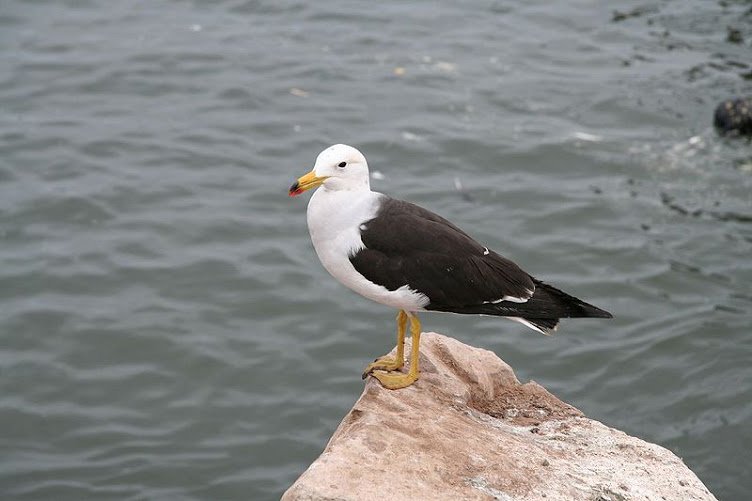
Alfredo Begazo grew up with Peruvian Meadowlarks and Marvelous Spatuletails, and was used to waking up to the morning choruses of Pacific Doves in Lima, Peru. He now wakes up to the choruses of Northern Cardinals and Northern Mockingbirds in sunny Vero Beach, Florida. Alfredo, an experienced birder in Peru and well-rounded naturalist, founded a birding and nature eco-travel company, known as Surbound Expeditions (Sur=Spanish for south). He recently introduced 10,000 Birds readers to the birds of Peru’s coastal desert and the challenges of photographing Great Grebes. We’re thrilled about this new contribution:
I live about a mile and a half from the beach on Florida’s east coast. Contrary to what may seem logic, I visit the beach more often during the winter time, than during the summer; largely because the summer crowds are not there, and wintering shorebirds and gulls are actually foraging along the shore without being bothered. Birdwise, the winter time in Florida’s coast is exciting. You never know what you are going to find flying over the water or along the shore. For instance, this past winter was one the most exciting ones; with birds such as Razorbills, Dovekies, Black Scoters, and Common Eiders showing up along the shores, some of them dead. These birds regularly winter off the coast of more northerly latitudes. Florida’s coast is not within their regular wintering ground, but this year apparently Tropical Storm Sandy disrupted the normal ocean current pattern in the weeks leading to the winter, resulting in unexpected changes in food availability, which forced these birds further south in desperation. The shorebirds and gull assemblage, however, was normal. As I walked along the beach, it occurred to me how similar this bird assemblage is to its counterpart in the Southern Hemisphere during this time of the year.
This photo could have been taken in Florida’s Treasure Coast during the winter months or in South America during the same period. It shows a Ruddy Turnstone, Sanderlings, and an a Semipalmated Sandpiper. The yellow flag on the sandpiper means it was banded in Peru, where this photo was taken. Please report banded and flagged birds to the US Fish and Wildlife Service. Photo: Eveling Tavera.
The northern and southern hemispheres have opposite seasons; the winter season in the northern hemisphere corresponds to the summer in the southern hemisphere. Hence, migratory birds fly south during the winter here into the summer in the south. During the months of December, January, February, and March, the bird community along Florida’s east coast is similar to that along the coast of Central Peru and North-Central Chile. And by similar, I mean the species and abundance of shorebirds and gulls.
Common resident and migratory gulls along the coast of Peru and Chile including immature Kelp Gull (largest, center front); juvenile Band-tailed Gull (all dark with black-tipped yellow bills); adult Band-tailed Gulls in breeding plumage (black and white with black-tipped yellow bills); Franklin Gulls (gray and white far in the background. Photo: Joseph Huaroto
Florida is a rather long state. The East-Central portion of the state I am referring to, and where I live, is officially known as “‘The Treasure Coast’ where Tropics Begin.” The bird community in The Treasure Coast during these months of the year is composed of migratory shorebirds and migratory and resident gulls. In Florida, during the months of December, January, February, and March, Sanderlings are the most numerous shorebird; followed by Western Sandpipers, Ruddy Turnstones, and Willets. The composition of the bird community is remarkably similar in the region encompassing Central Peru to Central Chile. In Florida, there is a resident small gull, two species of large gulls, and one species of gull that is abundant. The small resident gull in Florida is the Laughing Gull, the two large ones are Lesser and Great Black-backed Gulls and the abundant gull is the Ring-billed Gull. In South America, the small resident gull is the Gray Gull, the two species of large gulls are the Kelp and Band-tailed, and the abundant gull is the Franklin Gull. Herring Gulls winter in Florida in relatively small numbers, and its South American counterpart would be the resident and uncommon Gray-hooded Gull.
Adult Band-tailed Gull like the bird in this photo and adult Kellp Gulls are remarkably similar to Great and Lesser Black-backed Gulls found in the coast of Florida during the winter months. These gulls were the trigger for this comparative post. Photo: Alastair Rae
Thus far I have been comparing the coastal bird community along the east coast of Florida with that in Central South America. But in reality, this may be the same bird community; one that happens to start in this part of Florida and extends south to Central Peru and Chile. The core of this bird community is largely the same (wintering shorebirds) with some species (mostly gulls) replacing each other along a latitudinal gradient.
Gray Gulls are a common resident bird along the sandy beaches of the Pacific Ocean of Peru and most of Chile. Gray Gulls would be the Laughing Gull tropical counterpart. Photo: Dave Moran.
Whether this comparison is valid or has an ecological meaning is anybody’s interpretation. As birders, we love to make comparisons, quantify what we see, find the difference between this and that species, keep lists of all sorts, and make self imposed benchmarks. This is inherent to us and to our sport. I am pretty sure many of us think of what we are seeing in terms of how this relates to this or that, and validate our thoughts by comparing notes with our peers. This is one of the things that came to me as I walked along the beach, looking for a Razorbill or any of the other rare goodies I needed for my county list. No hope for a Razorbill or a Dovekies along the coast of Peru and Chile, though!
Kelp Gulls like this pair in adult plumage are common resident along the Coast of Peru and Chile. Photo: Jorge Novoa.

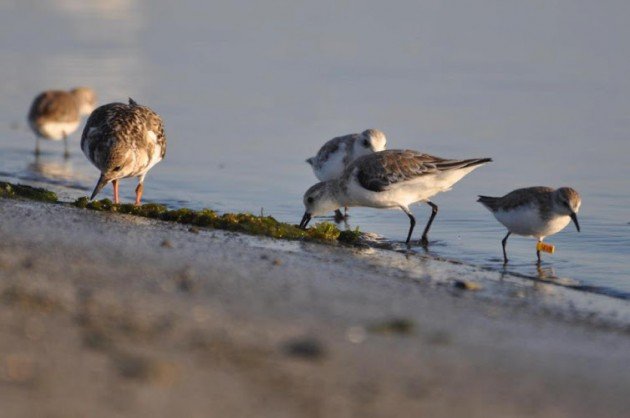
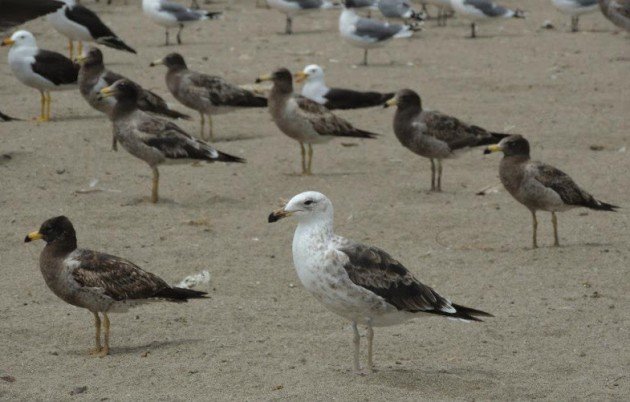
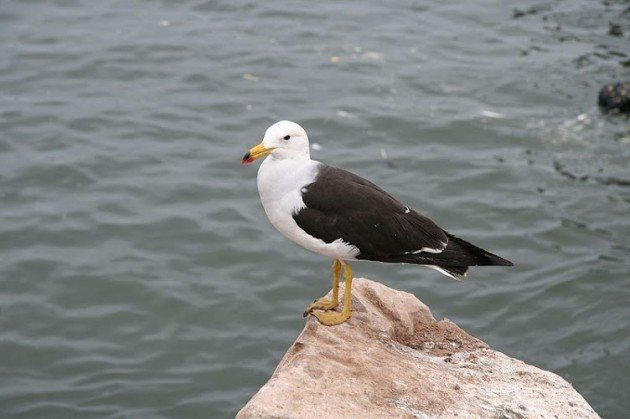
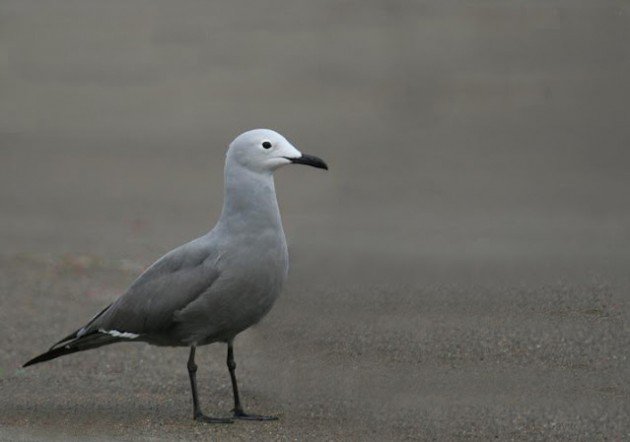
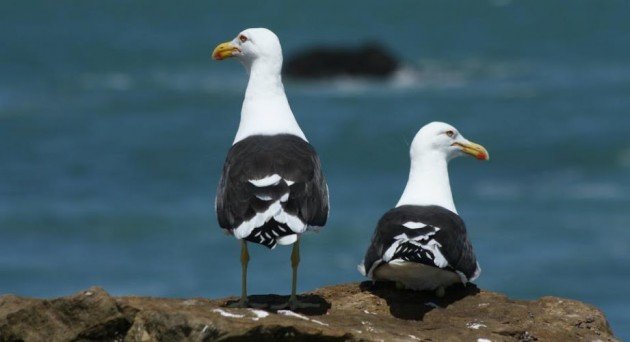










A refreshing way to view gulls and shorebirds! I was thinking along these lines when I visited southern California earlier this year, thinking of the Western Gull as the North American equivalent of the Great Black-backed Gull.
The Gray Gull is lovely looking. Hard to believe they nest in the desert.
Thanks for a great post and great photos! I live on the coast and am fascinated by gulls, their travels and transformations. Would love to see that Gray Gull.
Hi Donna,
The Gray Gull is a “staple” bird along the Atacama Desert and the coast of Peru. They are there on the coldest and foggiest winter day as well as on a sunny summer day. They have this sad type of calls.
For the longest time, nobody knew where they nested until, as you mentioned, they found nesting colonies in the heart of the Atacama desert where they are relatively safe as nothing lives there.
I am glad you liked it Wendy.
I enjoy the gull ID challenge too! Compared to North American gulls, the gull challenge in South America is not as hard, as there are fewer species, are largely resident, and are very different from the North American migratory gull species.